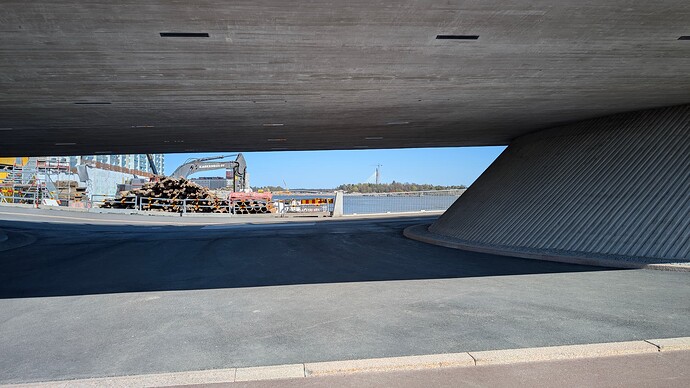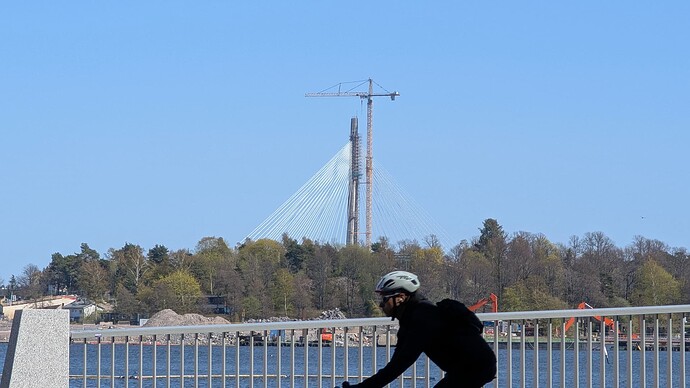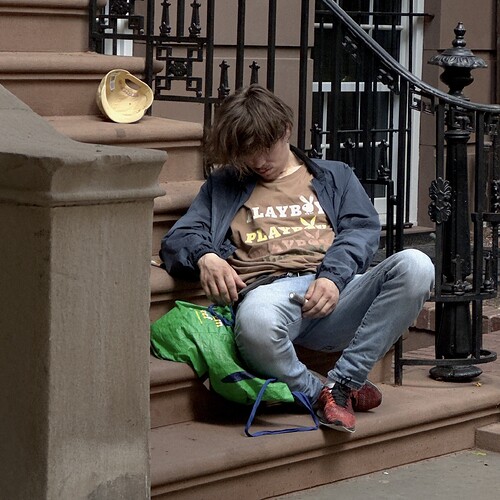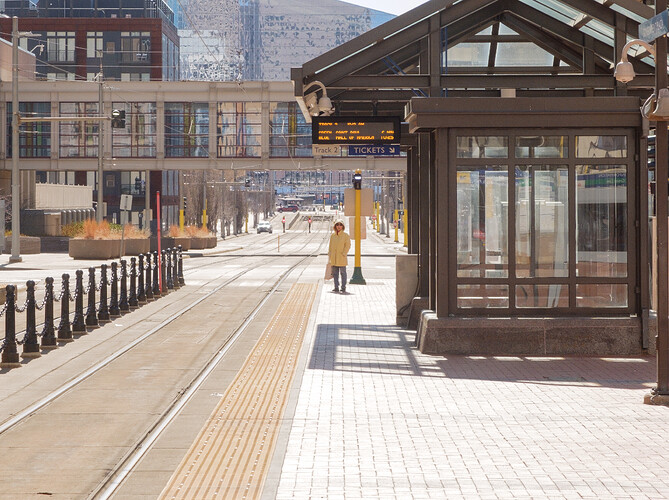It reminds me of the Tarrant County Courthouse* in Ft. Worth, but this is even nicer.
*The original, not the annex(?) where they painted an illusory brick facade, although that was cool the 1st time I noticed it
It’s nice.
Is… that a drunk hipster or an unhoused person? ![]()
At first I thought he was homeless, but as I walked passed him I realized he was awake and watching something on his phone. Then I saw his Playboy t-shirt and his vape. I don’t know what his story is, but I can only say the world is his lounge.
ETA — the way you can tell if someone is homeless in NY is to look at their shoes. He might have been a spectator at the nearby Dance Parade.
Isn’t that NYC? isn’t that how people live - their stoops are their front porches?
That depends on the neighborhood. Not where this picture was taken, and I can guarantee he did not live in that building. It just looked comforable.
Ah! Thanks for letting me know what’s happening there!
Discounted HSL tickets?
Helsinki politicians are attempting to make public transport trips in the capital region cheaper, reports Helsingin Sanomat.The paper said 25 councillors are proposing that ticket prices be reduced by 25 percent to help achieve the city’s climate goals. At the same time, they want to combat transport poverty among low-income residents.
Elina Kauppila (Left) initiated the proposal, which was signed by councillors from different groups.
Over the years, the city has urged Helsinki Region Transport (HSL) to curb sharp price increases on the tickets most used by Helsinki residents. However, the capital cannot act unilaterally, as HSL is a joint authority made up of nine municipalities.
Unlike Helsinki, the other eight HSL member municipalities have not been able to increase their own funding to achieve the reductions. HSL hasn’t approved municipality-specific discounts yet.
Mari Flink, Director of the Markets Division at HSL, said that equal treatment of residents of member municipalities is enshrined in HSL’s basic agreement, preventing Helsinki from being able to offer its own residents cheaper prices.
Flink noted that while HSL’s board ultimately sets ticket prices, the upcoming financial plan faces added pressure from major construction projects, which could lead to fare increases.
Helsinki calculates that the 25 percent reduction in ticket prices now proposed would increase the municipal funding paid by the city from 300 million to 360 million euros.
Over the past 15 years, public transport trips by Helsinki residents have become 55–75 percent more expensive, depending on the ticket type. Meanwhile, prices for longer-distance tickets have increased only 12–22 percent.
HSL’s goal has been for passengers to pay half the costs of running transport through ticket sales and for municipalities to cover the other half through tax funding.
The Helsinki City Urban Environment Committee discussed the proposal on Tuesday.
Neat perspective trick there - I keep thinking the signpost is closer to the camera than the person in the yellow coat!
I can see that.
Detroit’s grand avenues are almost perfectly arranged for a streetcar system radiating out from downtown, but car culture is so ingrained in the city and its history that we get this sort of waste of space instead.
As Detroit grew rapidly during the automotive boom of the 1910s and 1920s, its planners sat down with others in the region and conceived of something that would radically change how its citizens got around. It was called the superhighway, and it was the key element of perhaps the single most ambitious regional mass transit system ever proposed in the United States.
That’s right—Southeast Michigan’s sprawling grid of “Mile Roads” was conceived not merely as a means of circulating private vehicle traffic, but as a holistic regional network consisting of surface rail, subways, streetcars, and, yes, automobiles.






